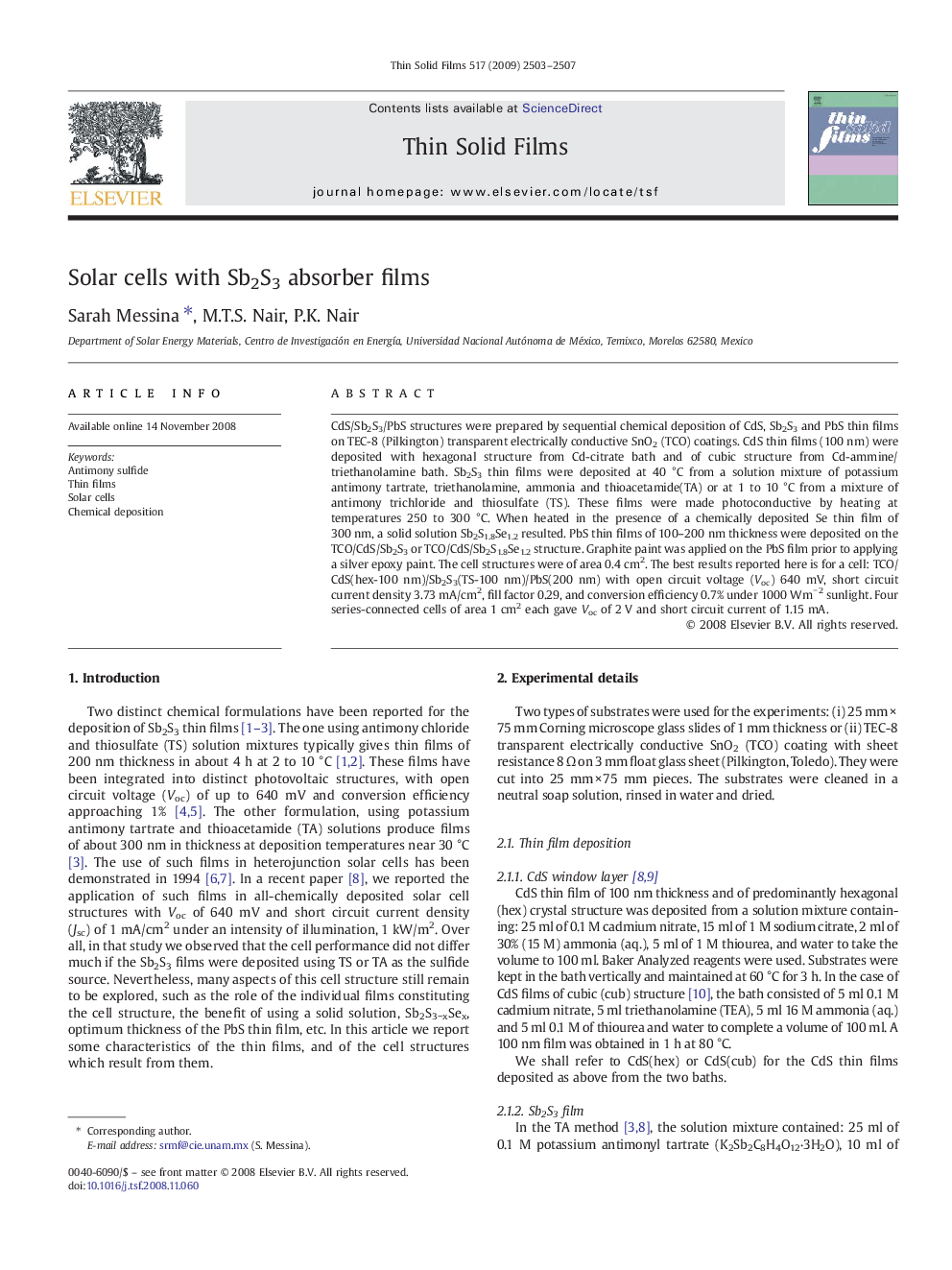| Article ID | Journal | Published Year | Pages | File Type |
|---|---|---|---|---|
| 1671230 | Thin Solid Films | 2009 | 5 Pages |
CdS/Sb2S3/PbS structures were prepared by sequential chemical deposition of CdS, Sb2S3 and PbS thin films on TEC-8 (Pilkington) transparent electrically conductive SnO2 (TCO) coatings. CdS thin films (100 nm) were deposited with hexagonal structure from Cd-citrate bath and of cubic structure from Cd-ammine/triethanolamine bath. Sb2S3 thin films were deposited at 40 °C from a solution mixture of potassium antimony tartrate, triethanolamine, ammonia and thioacetamide(TA) or at 1 to 10 °C from a mixture of antimony trichloride and thiosulfate (TS). These films were made photoconductive by heating at temperatures 250 to 300 °C. When heated in the presence of a chemically deposited Se thin film of 300 nm, a solid solution Sb2S1.8Se1.2 resulted. PbS thin films of 100–200 nm thickness were deposited on the TCO/CdS/Sb2S3 or TCO/CdS/Sb2S1.8Se1.2 structure. Graphite paint was applied on the PbS film prior to applying a silver epoxy paint. The cell structures were of area 0.4 cm2. The best results reported here is for a cell: TCO/CdS(hex-100 nm)/Sb2S3(TS-100 nm)/PbS(200 nm) with open circuit voltage (Voc) 640 mV, short circuit current density 3.73 mA/cm2, fill factor 0.29, and conversion efficiency 0.7% under 1000 Wm− 2 sunlight. Four series-connected cells of area 1 cm2 each gave Voc of 2 V and short circuit current of 1.15 mA.
